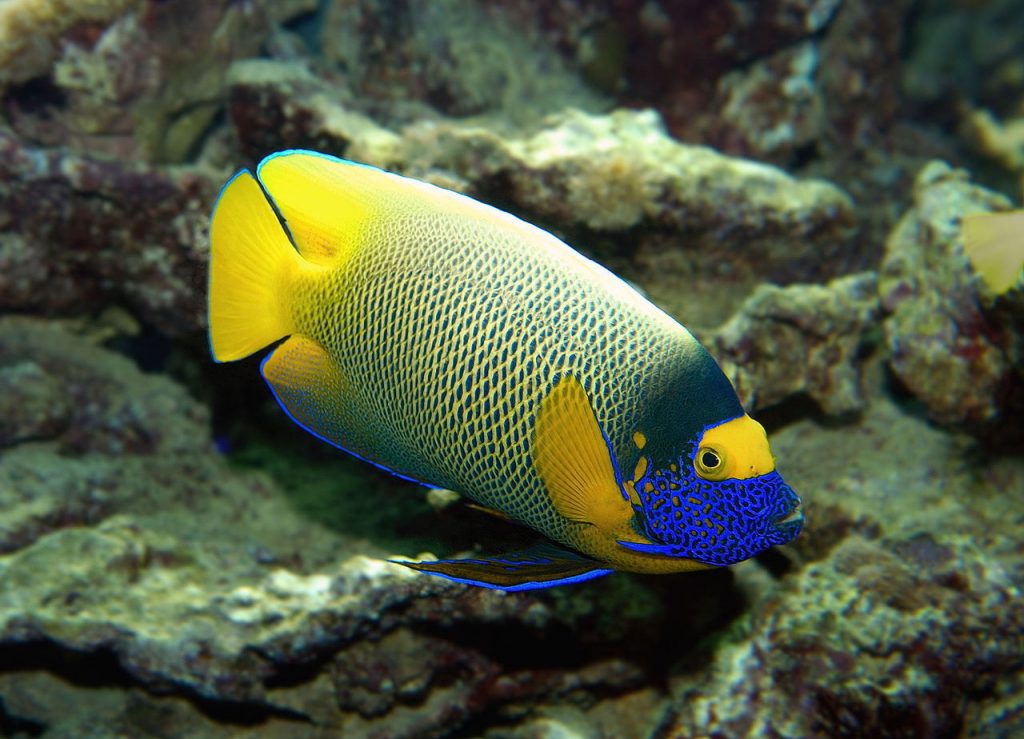
The Blueface Angelfish Pomacanthus xanthometopon can be found natively in the waters of the Indo Pacific Ocean from Maldives to Vanatau and also in Palau in Micronesia. This fish is also referred to as a Yellowface Angelfish or Yellowmask Angelfish.
What makes this fish so striking is the mesh-like blue and gold/orange pattern that covers most of the body. It has a distinct dot that resembles an eye on the back lower half of the dorsal fin. Oddly, the juvenile looks nothing like the adult; sporting black, blue and white zebra-like stripes. Because of this, many assumed this was a completely different fish in its juvenile form.
Although the fish’s face is mostly blue, it has a yellow patch that crosses over the eyes, which is why it’s also known as the yellow mask angelfish. Because of its striking color pattern, the bluefaced angelfish is highly sought after for saltwater marine hobbyists, and it’s on the expensive side. You can expect to pay $170 and up.
Table of Contents
Tank Considerations
Like many of the large varieties of saltwater angelfish, the blue faced angelfish can grow quite large — up to 14 inches. This means these fish require a large tank. As juveniles, you can get by with a 125 gallon set up, but when they mature, they’re going to need at least a 225 to 275 gallon.
Like the emperor angelfish, the blueface angelfish needs attention if you want to keep them alive. They’re not as hardy as other varieties of angelfish, and regular water changes and keeping water quality high is essential to their well-being.
Because these angelfish are more susceptible to diseases caused by stress, it’s advised that you give them ample room to swim. It’s also highly recommended that you introduce these fish to a biologically mature tank, which means a tank that’s been running for at least 6 months. Introducing them into a tank that’s not been properly cycled could result in their death.

In the wild, these fish are used to live rock, and you should consider that for your home set up as well if you want them to be comfortable. However, they do graze on coral, so take that into consideration. In addition, they like to feel secure by having quick places to hide, so make sure there are enough nooks, crannies and caves in your tank for them to get into in case they feel threatened.
Unlike other species of saltwater angelfish, the blueface angelfish isn’t quite as aggressive, and while they can get along with other species of angelfish, they are prone to go after smaller fish. Also, as with most angelfish, it’s recommended that you add them to your community tank last because if they’re the first fish in, they may claim the whole tank as their territory and go after any fish added later as they see them as intruders.
If you’re including other large saltwater angelfish in your tank it’s recommended that you get your blueface angelfish established and eating before introducing any new angelfish to the tank.
In the wild these fish are used to water temperatures that range from 72˚ – 82˚ Fahrenheit, with a pH range from 8.1 – 8.4, a specific gravity of 1.023 – 1.025, and water at medium hardness (8-12 dKH). Replicate these in your home aquarium and they’ll be happy.
As mentioned, the bluefaced angelfish isn’t tolerant to changing water conditions, so you’re going to be sharp about testing water and doing regular water changes. Most experts recommend changing 15% every other week or 39% a month.
Lastly, because this fish likes to graze on coral they can create a lot of waste, which can cause a smaller tank to become polluted more quickly.
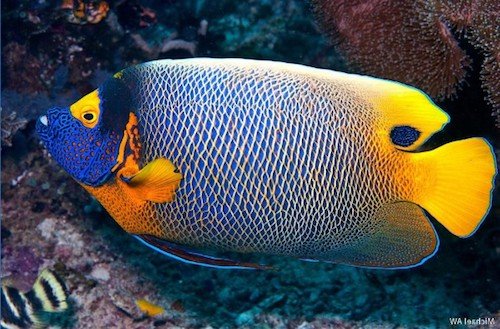
Health and Care
As mentioned previously, the blueface angelfish needs a fair amount of care and attention to the water conditions in order to keep them alive. Also, like many other species of saltwater angelfish, this fish is prone to disease and illness, especially when they’re stressed.
Common ailments affecting these fish are Saltwater Ich, or Crypt (White Spot Disease.) You can avoid your fish getting these ailments by maintaining optimum water conditions and by reducing the amount of stress they endure.
Stress can be reduced by combining them with the right tank mates and ensuring they’re getting enough nutrition to keep their immune systems functioning properly.
As with all fish, it’s highly recommended that you quarantine your blue face angelfish before introducing it into your community tank. If you’re buying from a local retailer, make sure to observe it carefully for any signs of trauma or disease.
Diet
Like most saltwater angelfish, the bluefaced angelfish is an omnivore and likes to dine on sponges and other encrusting animals. In the home tank, you can keep them healthy with a variety of foods such as live, frozen and prepared foods you’ll find at your pet retailer. In addition, they also like treats of chopped squid, scallop and shrimp. Many aquarium specialty retailers carry specialized food designed to enhance the color of these fish. It’s recommended that these fish be fed small meals 2 to 3 times a day.
Breeding
Like many other species of saltwater angelfish, the blueface angelfish hasn’t been successfully bred in the home aquarium.
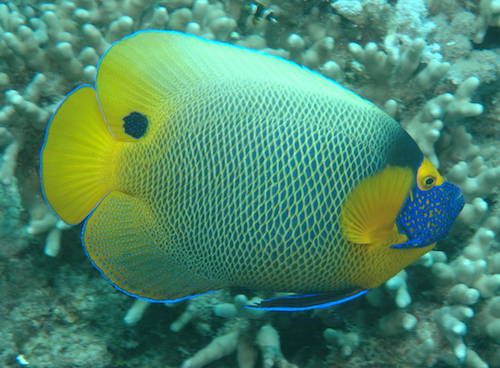
Summary
- Fish size: Up to 14 inches
- Tank size: 125 gallons for juveniles 225 to 275 gallon for adults
- Diet: Omnivore
- Water temperature: 72˚-82˚ Fahrenheit
- Water hardness: 8-12 dKH
- Specific gravity: 1.023 – 1.025
- Water pH: 8.1 – 8.4
- Breeding: Very Difficult

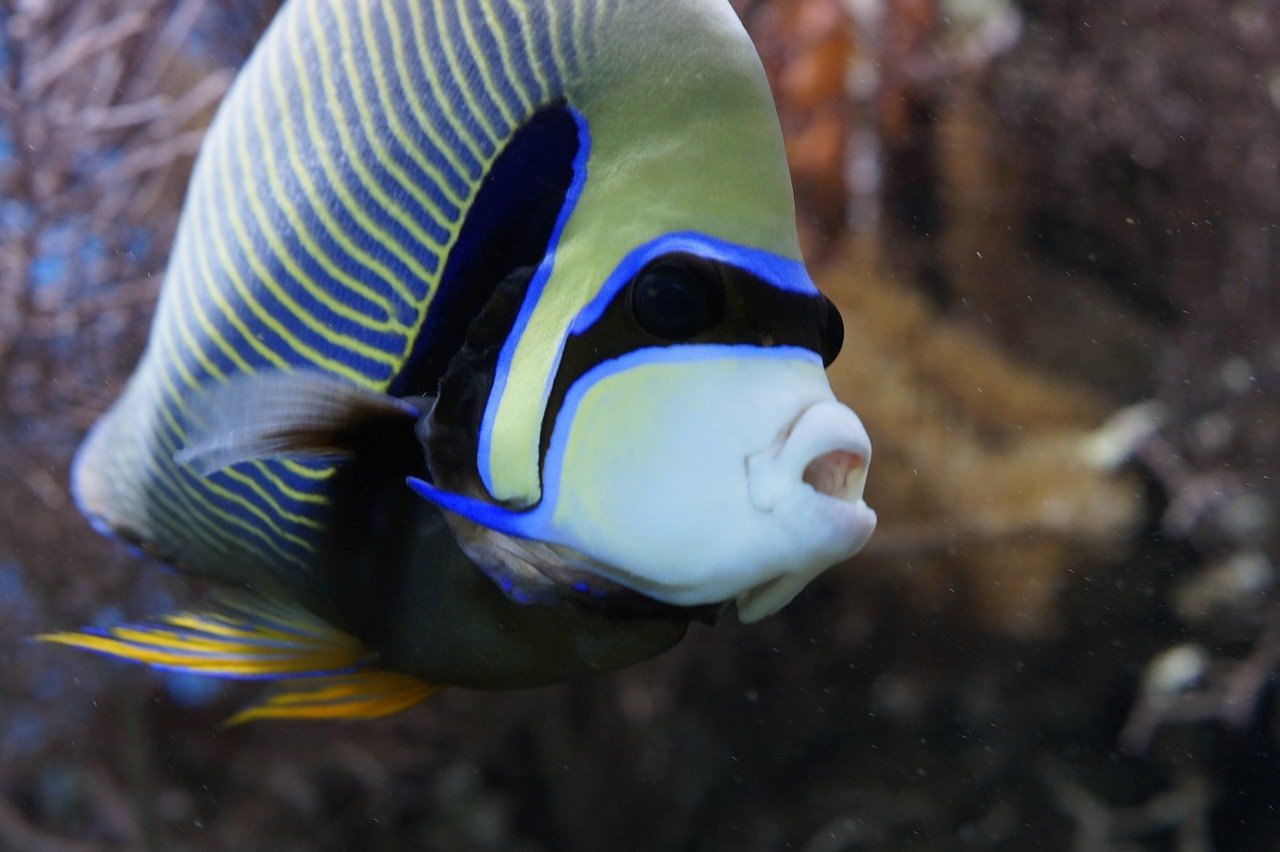
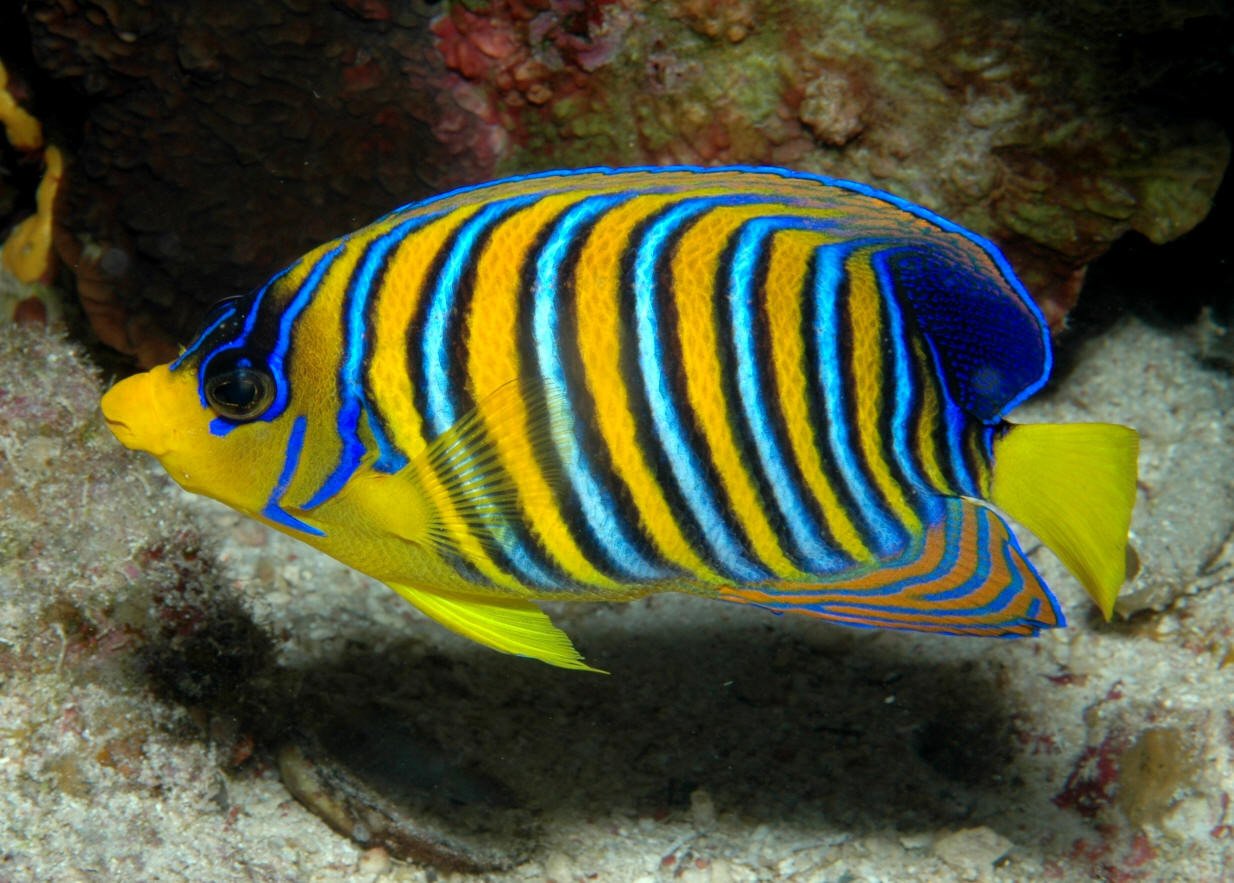

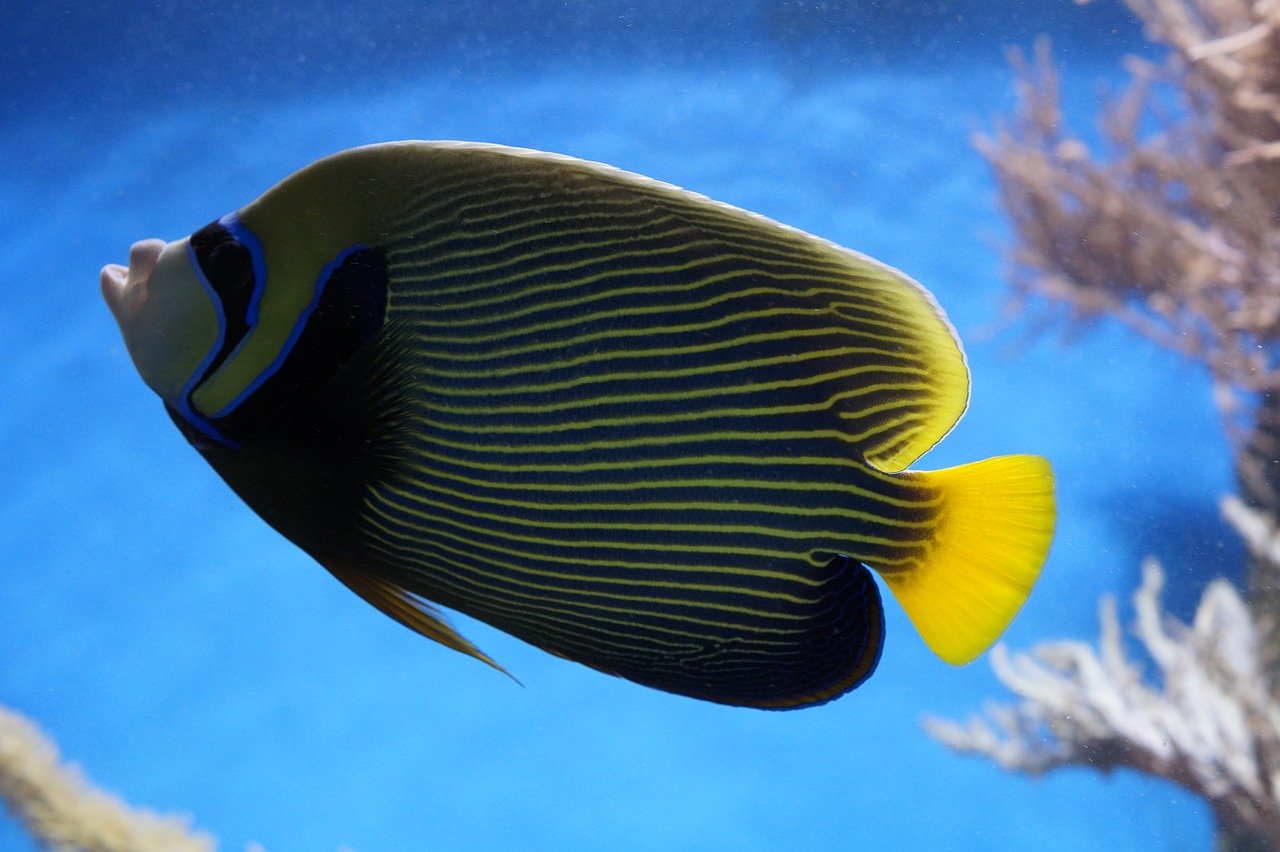
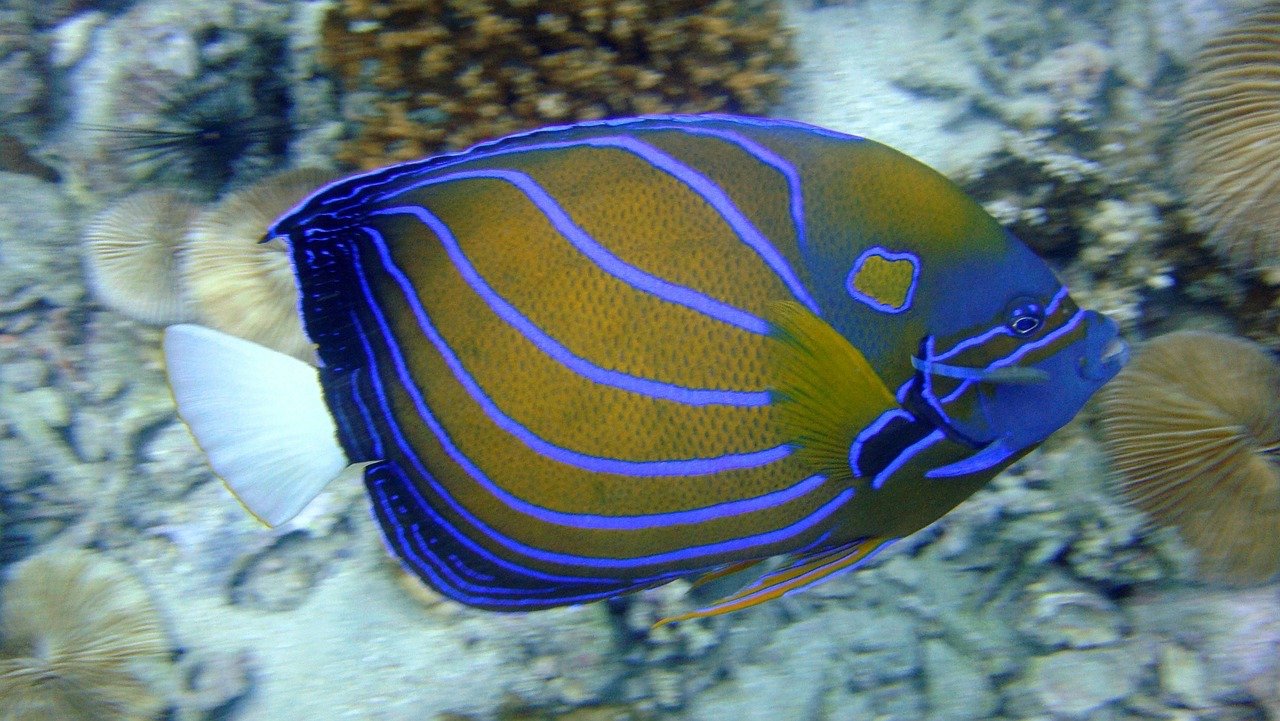
Leave a Reply